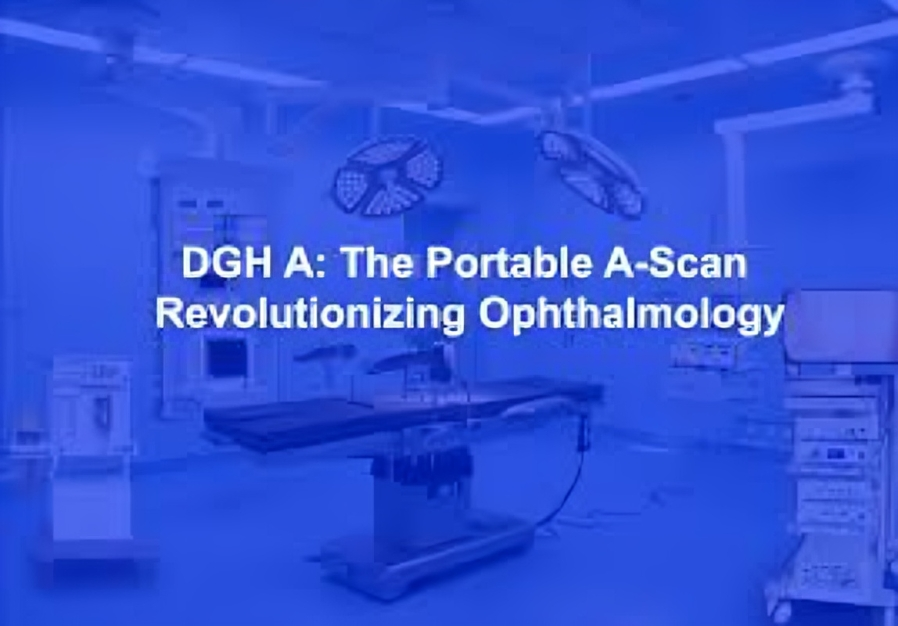The term DGH A may mean different things depending on the context—but in two distinct domains, it stands out with significant relevance. In medical circles, DGH A refers to the DGH 6000 Scanmate A, a portable A-scan ultrasound device transforming ophthalmology practice. Simultaneously, in India’s energy and petroleum sector, DGH A touches the Directorate General of Hydrocarbons (DGH)—a cornerstone of upstream regulatory operations. This article offers a deep-dive into both interpretations, highlighting their impact, functionalities, and future relevance.
1. DGH A in Ophthalmology: DGH 6000 Scanmate A
1.1 Overview and Purpose
The DGH 6000 Scanmate A—often referred to simply as Scanmate A—is an advanced, portable A-scan biometry device designed for ophthalmic diagnostics OphthalmologyWeb. It empowers eye care professionals with precise measurements vital for procedures such as cataract surgery, offering a blend of accuracy, efficiency, and mobility.
1.2 Key Features
Precision Biometry
It captures essential ocular metrics—axial length, anterior chamber depth, lens thickness, and corneal thickness—with speed and reproducibility Big Write Hookpremierop.comOphthalmologyWeb.
Advanced IOL Algorithms
Equipped with industry-standard intraocular lens (IOL) calculation formulas like SRK/T, Hoffer Q, Holladay I, Haigis, SRK II, and others, including post-refractive options, it ensures precise IOL power planning premierop.com.
PC Integration & Data Handling
The device connects via USB to PCs, enabling intuitive software integration, data storage (local or networked), and compatibility with EMR/EHR systems—enhancing workflow and patient data management OphthalmologyWeb.
Portability & User Experience
Compact in design, it includes carrying accessories for easy transport. Audible alignment feedback and waveform quality indicators boost measurement reliability and operator confidenceophthalmicmart.com.
Versatile Deployment
Able to switch between water immersion or direct contact methods, with adjustable probe sensitivity to protect against corneal compression premierop.com.
1.3 Clinical Impact
Such flexibility makes the Scanmate A ideal across clinical environments—be it established clinics or mobile care units. Its portability preserves measurement accuracy while supporting dynamic workflows. Clinicians benefit from enhanced efficiency, streamlined data capture, and seamless integration into electronic health systems.
2. DGH A in Energy Governance: Directorate General of Hydrocarbons (DGH)
2.1 Institutional Overview
In India’s petroleum sector, DGH (Directorate General of Hydrocarbons) is a leading upstream regulatory body established in 1993 under the Ministry of Petroleum & Natural Gas dghindia.gov.inWikipedia. While often referred to simply as DGH, the significance of the “A” in public references may denote a specific division or phase—but commonly, DGH A highlights this regulatory entity.
2.2 Key Mandate and Functions
Policy and Licensing
DGH plays a pivotal role in implementing licensing frameworks like the New Exploration Licensing Policy (NELP), managing Production Sharing Contracts (PSCs), and overseeing exploration and field development strategies dghindia.gov.inWikipedia.
Technical Oversight & Resource Management
With a mandate to ensure sound petroleum resource management, DGH monitors reservoir performance and encourages investment in both conventional and unconventional energy sources—including Coal Bed Methane (CBM), gas hydrates, and oil shales dghindia.gov.inWikipedia.
Balanced Regulatory Stewardship
DGH adheres to a vision of maintaining environmental safety alongside technological and economic efficiency, positioning itself as a techno-regulatory advisory body of global repute Wikipedia.
2.3 Sectoral Significance
As India seeks to bolster energy security in a transitional landscape, DGH acts as a linchpin—aligning industry growth with sustainability mandates. Its multifaceted oversight—from policy design to resource exploration—cements DGH’s relevance in national energy planning and implementation.
3. Dual Perspectives: Comparative Insights
| Context | DGH A – Scanmate A | DGH – Hydrocarbons Regulator |
|---|---|---|
| Domain | Ophthalmic diagnostics | Upstream petroleum regulation |
| Primary Function | Precise eye measurement & IOL calculation | Licensing, oversight, and resource management |
| Key Strengths | Portability, accuracy, EMR integration | Policy enforcement, technical governance, sustainability |
| Impact | Improved patient outcomes & clinical efficiency | Enhanced exploration governance & energy security |
| User Base | Eye care professionals | Government, energy firms, regulatory stakeholders |
4. Universal Relevance and Forward Pathways
4.1 In Ophthalmic Technology
The DGH Scanmate A highlights a broader push toward mobile, accurate, and integrated diagnostic tools—key for expanding access in under-resourced areas or dynamic clinical settings. It represents the shift toward agile healthcare technologies.
4.2 In Energy Regulation
DGH in India exemplifies the role of regulatory agencies in marrying policy, technology, and environmental stewardship. As energy landscapes transform—with renewables rising—the institution’s legacy in governance offers a blueprint for future resource regulation.
5. Conclusion
DGH A embodies excellence across two disparate yet impactful arenas:
-
In medicine, it is a precision ophthalmic tool, enabling enhanced care through portable, accurate biometry.
-
In energy, it symbolizes structured governance, channeling exploration and resource management through strategic technological oversight.
Despite operating in distinct domains, both interpretations of DGH A underscore innovation, integration, and improvement—whether for individual patient outcomes or national energy futures. As simple as the acronym appears, its dual legacies serve as powerful reminders that names carry meaning across fields, and understanding context is the first step to unlocking value.
